Graham Reid | | 4 min read
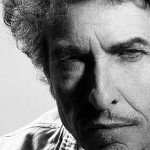
In his recent collection of essays
Listen to This, the New Yorker music critic Alex Ross
has an interesting and provocative piece on Bob Dylan. It opens,
“America is no country for old men. Pop culture is a pedophile's
delight” then he ask what – in this world of manufactured teen
pop – we are to do with “a well-worn, middle-aged songwriter who
gravitates towards the melancholy and the absurd”.
Calling Dylan – who turns 70 little
more than a month in April 2011 –
“middle-aged” is charitable. But Ross also suggests many writers
just want Dylan to die “so that his younger self can take its
mythic place”.
Dylan continues to write and perform,
but there's almost an agreed position among writers and critics to
treat lightly, if at all, what he's up to these days.
“The achievement is so large and so
confusing that the impulse to ignore all that came after his partial
disappearance in 1966 is understandable. It's simpler that way –
and cheaper. You need only seven discs, instead of forty.”
Ross's essay was originally written in
1999 and although much of it remains relevant, much has also changed.
The curious thing about Dylan today is
while he goes forward with new albums, there is much more of his past
in the present.
It began with the Bootleg Series
in 91 when he started releasing studio and live performances which
had never seen the light or were only in the realm of the avid
collector. The on-going and non-chronological series – now up to
Volume Nine, and which includes demo sessions from before he
signed to Columbia (as Sony was then) through to unreleased material
from the past decade – sits alongside his snapshot autobiography
Chronicles: Volume One of 04 in which he singled out
particular periods in his creative life for close scrutiny.
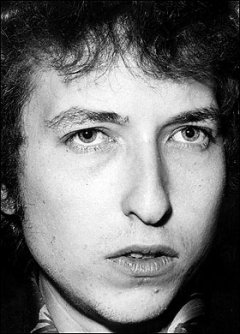 There was also Martin Scorsese's
in-depth No Direction Home documentary of Dylan and his music
up to 66; the recent re-release of the Folksinger's Choice
radio session he did in 62 (not sanctioned by Dylan); and the DVD of
his famous and evasively witty '65 press conference in San Francisco.
There was also Martin Scorsese's
in-depth No Direction Home documentary of Dylan and his music
up to 66; the recent re-release of the Folksinger's Choice
radio session he did in 62 (not sanctioned by Dylan); and the DVD of
his famous and evasively witty '65 press conference in San Francisco.
This year eight of his Sixties albums –
from Bob Dylan to John Wesley Harding -- have been re-presented in
mono and there has been the release of a concert at Brandeis
University in '63.
Add to that his Bob Dylan's Theme Time
Radio Hour in which he plays music which influenced or amused him
(from the Mississippi Sheiks in the Thirties to Gene Vincent in the
Fifties) and Dylan today appears to exists in a netherworld, a man
ever-present due to touring and new albums . . . but also ever-past.
No other artist – and Dylan has never
been like any other – exists in such a way.
In concert he may defiantly render his
classic songs unrecognisable (you can get to the chorus before you
realise it's Like a Rolling Stone he's croaking out in a
country-swing manner) but you could never say he'll do the expected.
However as Ross also notes, Dylan has
survived without being a “survivor”, that description we reserve
for those whose careers play out by rote as they await the
inevitable: opprobrium, irrelevance, obscurity or death.
Dylan continues on his wayward path and
those still listening count his recent albums – Time Out of Mind
(97), “Love and Theft” (2001), Modern Times (06)
and Together Through Life (08) – among his best for their
deft assimilation of many styles of American music (blues, folk,
Western swing, country, popular ballads) into a singular sound which
challenges, and lyrics which enlighten or confound at a turn.
That these albums were interspersed by
the Bootleg series and compilations which threw chronology
into a mixer just made Dylan's on-going career as a troubadour on a
“Never Ending Tour” even more interesting. He was a man out of
time, existing in one of his own making.
And he seems to have always just been
there: since his self-titled debut in March 1962, he has released 34
studio albums, 11 live albums and nine volumes of The Bootleg
Series during the administration of 10 US presidents from Kennedy
to Obama.
Dylan today isn't relevant to most
people, but the past two decades deserve more than a footnote in a
half century-long career which blew out of the Midwest, took root in
Greenwich Village then went global in songs which wrote themselves
into people's lives in the 60s and 70s.
Dylan in the late 70s carelessly tossed
out uneven but occasionally fascinating albums, but even his
“religious” period (haven't they all been?) of the early 80s is
being re-evaluated. Few would claim his late 80s or early 90s were
any good, but then he reconnected to something he'd almost forgotten,
his roots in American song. He went back to cover old folk and blues
on Good As I Been To You in 92 and World Gone Wrong two
years later.
Since then the past – his own, and
that old weird American music which existed before him – has been
ever-present.
The pleasure of Bob Dylan today -- as
much as the frustration he causes those who want faithful readings of
old hits – is he's an inconvenient pilgrim wandering between
worlds, equally at home in the past or the now.
And that he can, if you let him, take you on that journey.
Aside from the intralinks provided in this article there is a wealth of other material, rare songs singled out and material on his films at Elsewhere starting here.

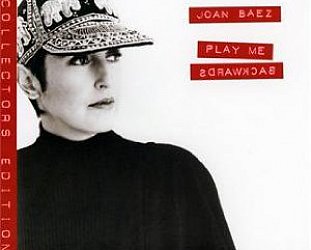
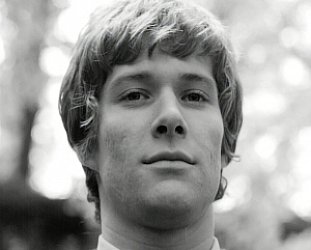
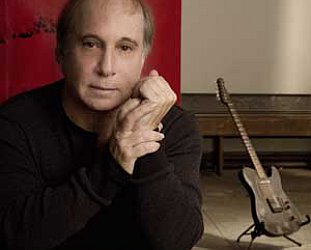


post a comment